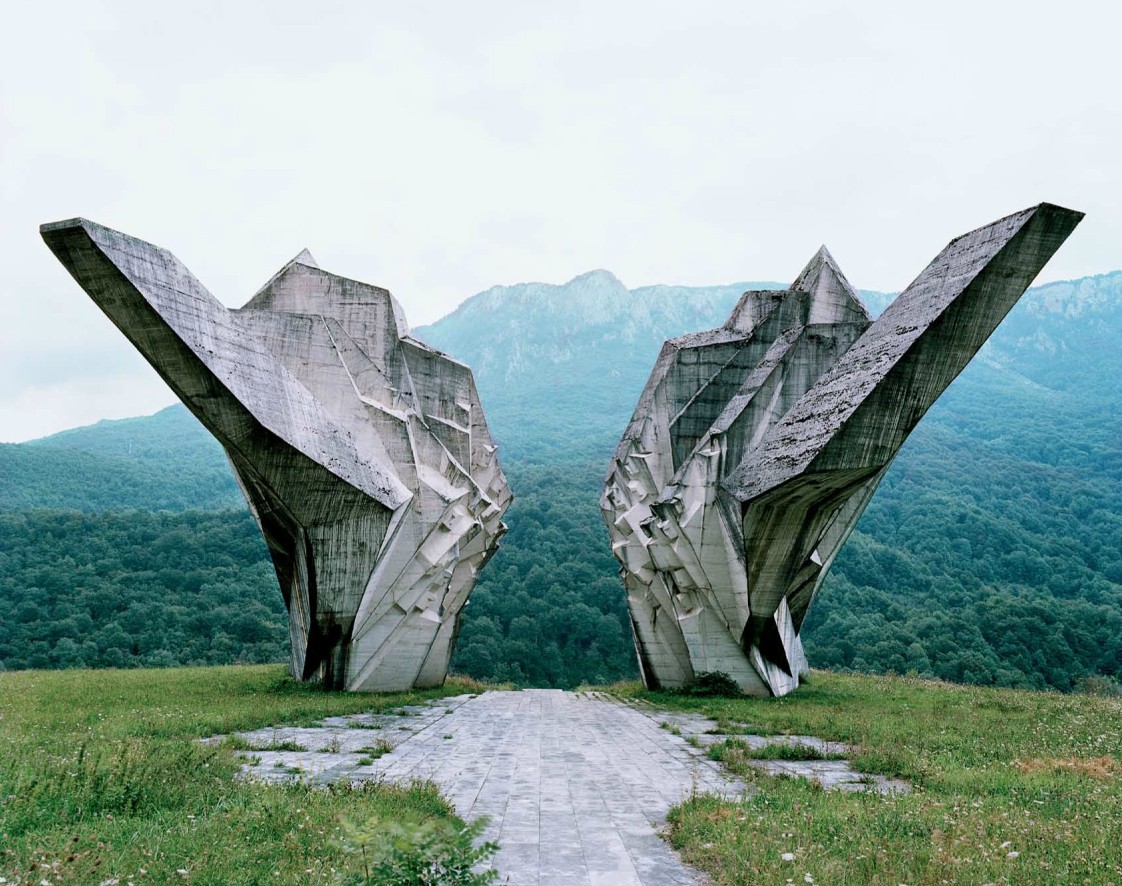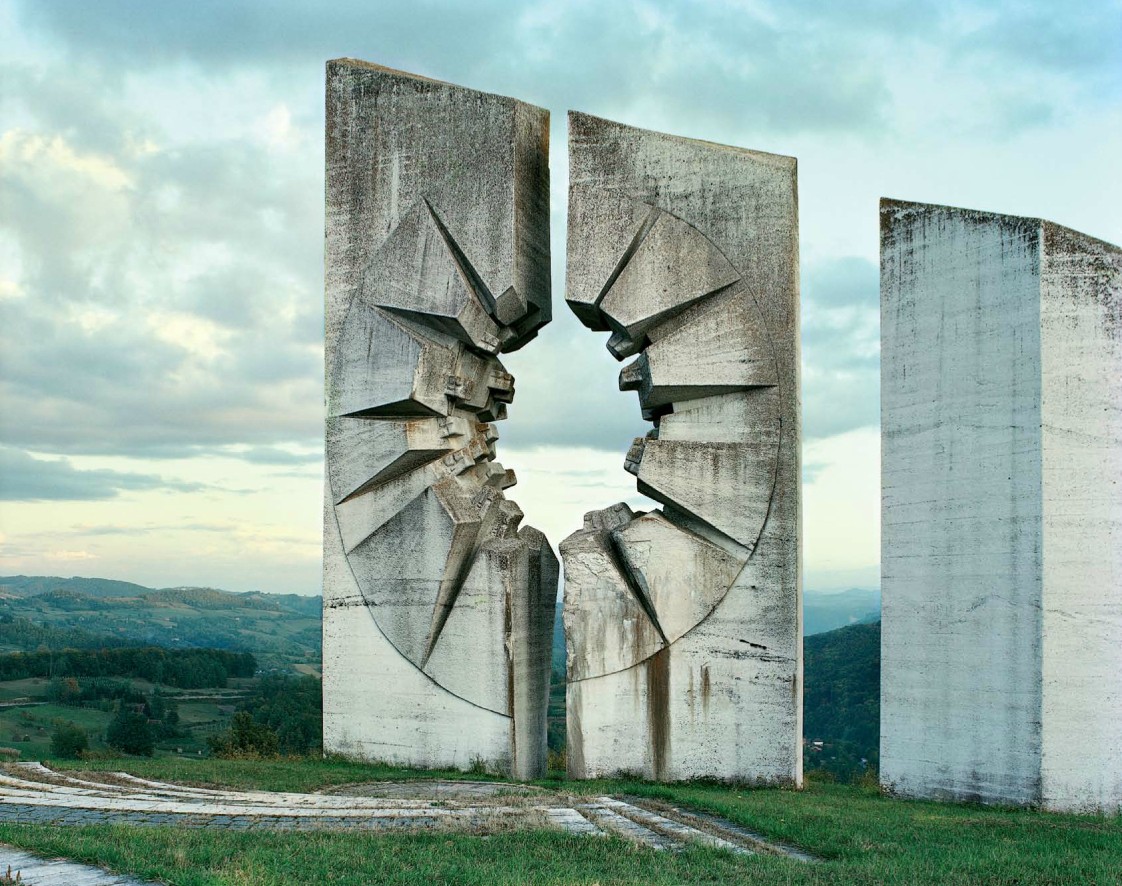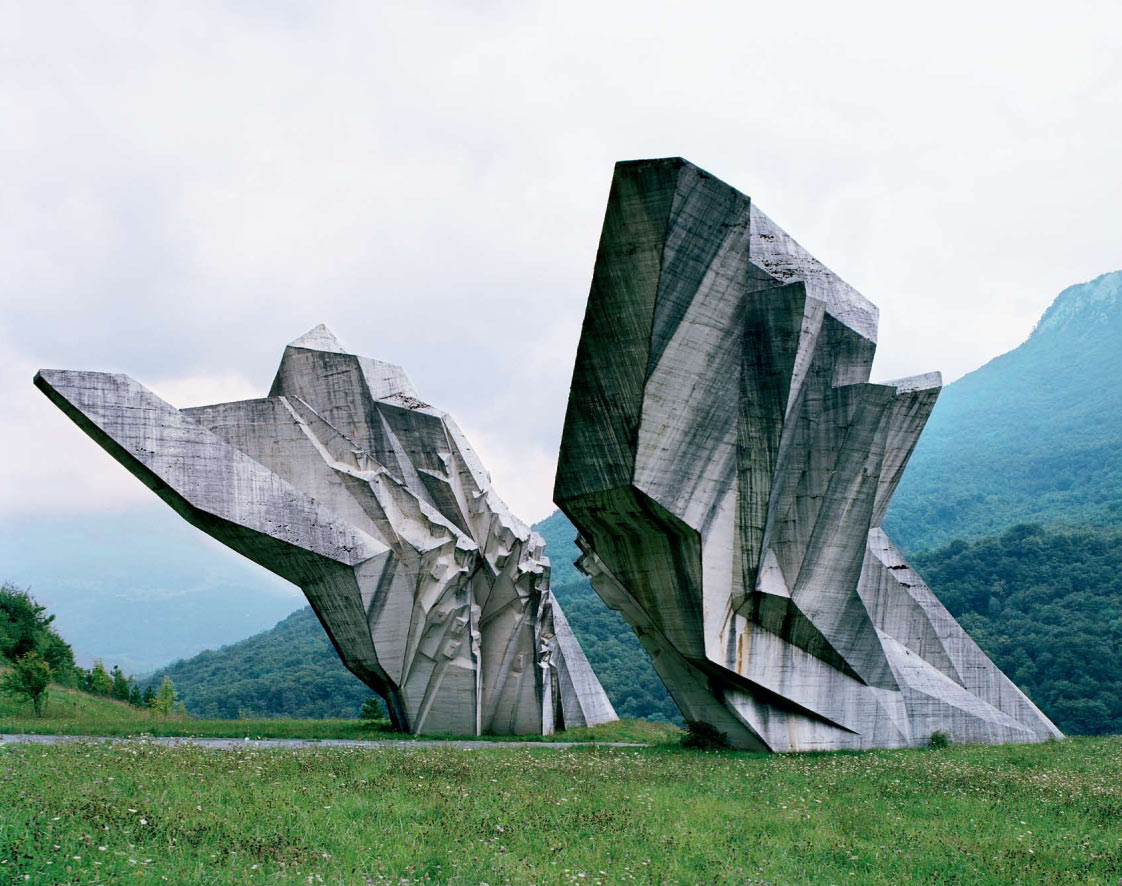Tito’s Memorials

These neglected sculptures are the legacy of Yugoslav President Josip Tito and they were built over the actual geographical sites of the battles and concentration camps of the second world war. These places were often remote from the surrounding villages and communities. The intention was to allow people to make a sort of pilgrimage to the actual places of violence. The design of these memorials is unique when compared to western standards. They’re very modern and abstract in form and very imposing (some of them are 15-20 meters high)- not at all a gentle reminder of the past.
It’s also telling that they’re in such a state of disrepair. Kempenaers describes having to force his way through forest underbrush and and along abandoned roads to find some of these places. The origins and purpose of the monuments vary but according to research conducted by Kampenaers;
These structures were commissioned by former Yugoslavian president Josip Broz Tito in the 1960s and 70s to commemorate sites where WWII battles took place (like Tjentište, Kozara and Kadinjača), or where concentration camps stood (like Jasenovac and Niš). They were designed by different sculptors (Dušan Džamonja, Vojin Bakić, Miodrag Živković, Jordan and Iskra Grabul, to name a few) and architects (Bogdan Bogdanović, Gradimir Medaković…), conveying powerful visual impact to show the confidence and strength of the Socialist Republic.
Since Tito’s reign ended the borders have shifted and the term ‘Balkanised’ has literally become a by-word for disunity. Few people from these regions are interested in preserving the memory of a conflict between two defunct ideologies in lieu of recent traumas. Serbian and Croatian communities are currently waging their own battles over the memorials to the civil wars of the 90s (The most recent article I could find is from The Economist here).
Despite all that I find something very compelling about the mentality behind these monuments. In Australia, war memorials often make appeals to courage and duty and nationalism. Which is a sort of injustice to those killed because when you involve those ideas you turn your shrine into a call to arms for further generations to follow suit. These monuments, on the other hand, are very austere and remote from ideas of patriotism and glory. The sculpture below is literally a giant shell-hole- upscaled and preserved to remind people of what war really is. A memorial to a conflict should be grim and, in some ways, it should be where the violence occurred. It should hallow the ground and give the visitor a sense of what went on.
The full series can be seen here and Kempenaers’s personal folio is here.











Leave a Reply